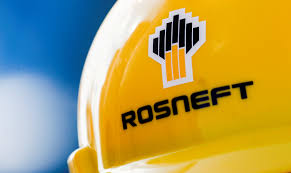Russia’s largest crude producer Rosneft announced Dec. 21 its commitment to achieve carbon neutrality by 2050, bringing forward some of its previous targets to reduce emissions.
The company’s 2035 climate targets set a year ago already included the prevention of 20 million mt CO2 equivalent of greenhouse gas emissions, reduction of upstream emissions intensity by 30% compared with 2019 levels, a methane emission rate below 0.25% and zero routine flaring of associated gas.
Under the new strategy, Rosneft has brought forward the target to achieve zero routine flaring to 2030, five years earlier than previously planned, and set a methane intensity reduction of below 0.2%.
To reduce emissions and become net-zero by 2050, Rosneft will implement “use of low-carbon power generation, zero routine flaring, usage of energy-saving technologies, carbon capture and storage technologies and use of natural forest offsets,” the company said.
As an interim target, Rosneft plans to reduce absolute emissions by 5% by 2025, and by 25% by 2030.
In addition, the company aims to gradually switch its vehicle fleet to low-carbon fuels, as well as produce and sell aviation fuels with lower carbon footprint.
Rosneft hopes its new climate targets will help achieve Russia’s goals under the Paris climate deal, which target carbon neutrality by 2060.
Hydrocarbons increase
In its updated strategy, the company plans to increase production of hydrocarbons to 330 million mt of oil equivalent, or 6.63 million b/d of oil equivalent, by 2030.
This would be 29% higher than 256.2 million mt of oil equivalent, or 5.13 million boe/d of hydrocarbons produced in 2020.
Rosneft aims to achieve this target through production growth at ongoing large projects and its Vostok Oil megaproject, which will link up some of the company’s vast resources in the north of Krasnoyarsk Territory with the Northern Sea Route, a development priority for Russia that will allow shipping to both European and Asian markets.
The cluster contains combined estimated resources of over 6 billion mt, or around 44 billion barrels, of premium crude, which has a low sulfur content ranging from 0.01%-0.04%. The company plans to produce 100 million mt/year, or 2 million b/d of oil at Vostok Oil by 2030.
Rosneft also sees the share of gas in its total hydrocarbons production rising to 25% by 2025 on the back of the Rospan and Kharampur projects, which have a total annual production capacity of 45 Bcm of gas. In 2020 gas accounted for slightly over 20%.
Rospan, a gas and gas condensate project in West Siberia, is expected to drive the company’s production of hydrocarbons and reach annual production of over 20 Bcm of gas, 5 million mt of gas condensate and more than 1 million mt of propane and butane in the near future.
In refining, Rosneft announced its aim to grow light product yields in Russia to 69%, from around 56% currently.

 Iran Energy News Oil, Gas, Petrochemical and Energy Field Specialized Channel
Iran Energy News Oil, Gas, Petrochemical and Energy Field Specialized Channel



